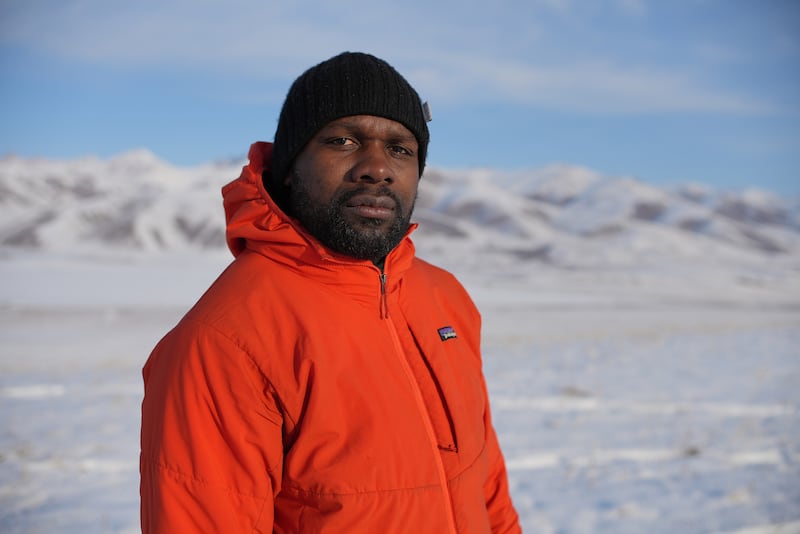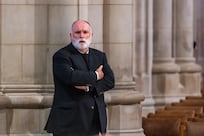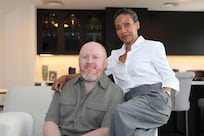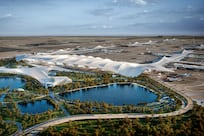British explorer Dwayne Fields has released a new series on National Geographic, where he traverses some of the harshest environments on the planet during the most extreme times of the year.
In the show, 7 Toughest Days, Fields overcomes epic physical and psychological obstacles as he guides himself and his camera crew to the safety of civilisation.
The series, which first aired regionally on February 8, takes place in different landscapes around the world.
“The great thing about 7 Toughest Days is that it is exactly what the title suggests,” Fields says. “We wanted to find spaces that were really harsh and in the harshest times of the year.
"In fact, we spent longer than seven days in each location. We also wanted places where we could potentially find some human interaction, where I could meet some locals and get some of their knowledge. Those guys know the terrain better than anyone so why not call on them as a resource?”
The first episode is set in the rainforests of Gabon. After overcoming raging waterfalls, crocodiles and snakes, Fields meets the Baka tribe, who direct him to a subterranean cave system he hopes will help him reach his extraction point.
“We looked at doing a jungle expedition and we looked at what countries had the biggest area of jungle,” Fields says. “Gabon was right up there. It is one of the wettest places. The jungles are the thickest, darkest and hardest to navigate through.”
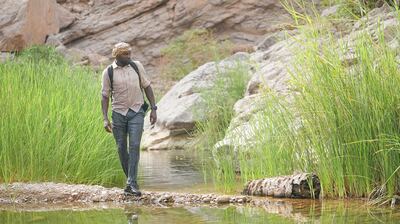
Fields then set his sights on Oman, where temperatures can rise well above 50°C in the summer, while looking to tackle the hottest climates.
The desert, Fields says, presents a number of unforeseen challenges and surprises. Fields and his crew begin their desert journey in peak summer, starting at the coast and heading inland to a higher plateau, where a vast sinkhole leads them to an oasis. They then venture out to an ocean of dunes, which stretch for hundreds of kilometres, and in the middle of this desolate wilderness, a Bedouin tribe emerge to rescue him.
“Let’s put this in perspective,” he says. “The average person in a temperate environment will drink about a litre and a half to two litres of water a day. In the desert, you have to double that at least. It’s harder than you think to drink that much. You can’t afford to get dehydrated. If you've missed a drink, you start suffering. The headaches start coming in. The confusion and challenges of making decisions start coming in. Intricacies like those that I found in the desert were a little bit tricky.”
Another factor that Fields says is necessary to think about while trekking in the scorching environment is wearing the right underwear.
“It sounds silly, but when you’re sweating and you’re walking and you start rubbing in all your creases, that’s when you realise you’re wearing the wrong underwear,” he says. “Lucky enough, I made those mistakes many years ago and I didn’t make them on this shoot. No matter how prepared you are, it’s those little things that are always going to catch you up.”
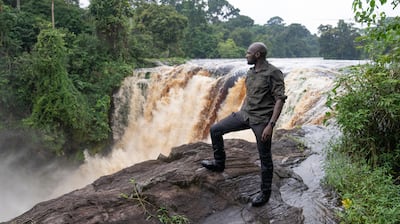
After Oman, Fields visits the mountains of Kyrgyzstan in the thick of winter. With temperatures reaching -40°C, he encounters blizzards and avalanches as he descends the 5,000-metre peaks of the Tian Shan mountain range, surviving the nights in deep crevasses. He then crosses a wind-swept valley to reach a seasonal encampment of nomads.
“It was a harsh, miserable terrain,” he recalls.
In between filming episodes, Fields did not have much time to adjust, as he went from one extreme environment to another. He had no more than two days rest between his expeditions in Gabon and in Oman, which made things tougher, he says.
“You’ve got all these things like bites, scratches, scrapes and all of that, and then you get to Oman where it’s dry, intense and unbelievable heat, which is relentless,” he says. “And then you add in the fact that you now have to carry all this water. In the jungle, we get some mercy. We can find water readily available. In Oman, you’ve got to find water, which is not easy in a big desert."
“Kyrgyzstan was slightly different,” Fields says. “We did Kurdistan as a stand-alone shoot. From the ambient temperatures in the UK, we flew out to Kurdistan. And the temperatures just plummeted. It was relentless.”
Fields’s penchant for carving a way out through the world’s harshest places goes back several years. He grabbed the world's attention in 2010 when he became the first black Briton, and second black man after American explorer Matthew Alexander Henson, to reach the North Pole. He was greeted by Queen Elizabeth II at Buckingham Palace on his return.
Fields has appeared in several BBC shows and is co-founder of the We Two Foundation, which encourages young, disadvantaged people in the UK to embark on life-changing expeditions across the country. A future trip to Antarctica is in the works, and Fields says he knows expeditions can have a huge impact, because they helped him overcome social struggles when he was growing up.
“The We Two Foundation was started because I recognise when I was younger, there was no one in the outdoor environment, the outdoor exploration space, that looked like me. That’s not solely because of how I look, as a black person," he says.
"My community was one of the most diverse communities anywhere in London, and nobody on TV reflected us. For me, it was always about what can I do to make other young people feel like there's a space for them or something they can work towards."
“I was born in Jamaica, a rural part of Jamaica where there were woodlands, fields, forests and streams,” he says. “It was awesome."
"I was six when we moved to London," he adds. "It was a completely different world. Kids are generally not encouraged to go out, or venture further than the space in front of their house.”
Fields did not handle the change well. In Jamaica, his family didn’t have a television. There were few magazines to thumb through. Electricity, gas and running water were luxuries, and Fields spent most of his time outside with his friends.
This was not the case in the UK. As children bonded over their favourite cartoons, superheroes, films and video games, Fields felt unable to connect with those his age. He struggled to make friends.
“I couldn't have that dialogue. I couldn't be part of that,” he says. “I carried that pattern of behaviour, that struggle through my teens. I had a few friends, but I didn’t feel comfortable in social settings.”
A turning point came when Fields was in his early twenties and had a near-death experience.
“I had a gun pulled out on me,” he says. “The guy pulled the trigger, cocked back and pulled the trigger again. It misfired both times. Because of that incident, I was under a lot of pressure to do something in retaliation. And I didn’t want to escalate it. I wanted to just be able to shout to the world and say I'm the kind of guy that loves the outdoors. That is where my passion lies.”
The third episode of 7 Toughest Days will be airing on Wednesday at 11pm UAE time on National Geographic.
